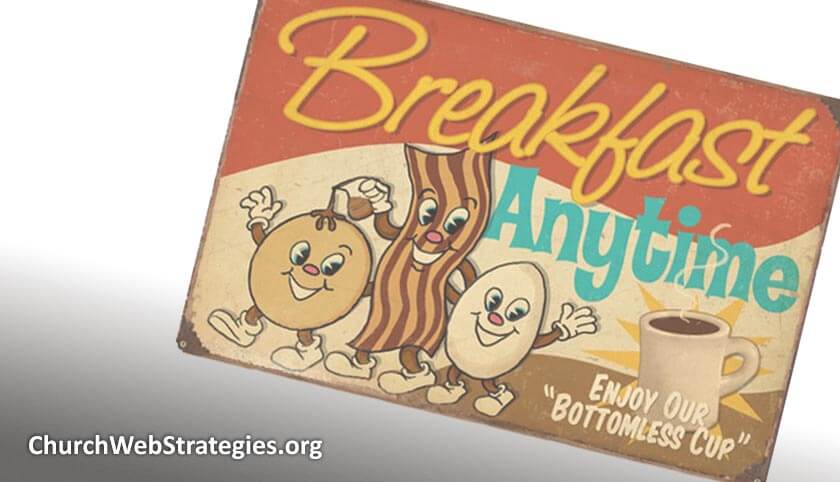Do not be afraid to utilize older design themes and imagery from historical churches to resonate with today’s audiences. There is currently a design theme that utilizes vintage art themes to remind people of “better times”. We often reminisce of the good old days, and how that time was somehow better (despite not having today’s technology). Churches can utilize this to remind visitors of a simpler time and find a unique way to present their brand on the web.
We live in a privileged time where we can use computers to design our branding and logos. Our designers have thousands of fonts to choose from, and tools to automatically create a myriad of color palette types. Unfortunately the amount of tools and design treatments has led to dips in maturity. Think of all the bad designs we had to endure through the late 90’s as the larger community learned to properly use lens flares, reflections, edge bevels, and drop shadows. A great way to focus our efforts is to look back at good design examples, and see where these tools can make it a little better. What steps can you take to integrate a vintage design into your current branding or web properties? I am glad you asked!
Seek Inspiration
While I do not want to put you in any personal danger, take your camera and drive to an older section of town. It is that part of the city that seems just a bit run-down and plenty of abandoned businesses and store fronts. Not feeling as adventurous? Start attending estate sales, flea markets, and auctions. Or you can patronize your local antique store or possibly a pawn shop. Regardless of your methodology, see what signs and logos you can find. You can simply take photos of that design, but if you have the storage space, purchase the item. I consider having the physical objects is a better representation of the art.
Settle on Message
Each decade of the 1900’s had a distinctive look and feel. As various aspects of culture changed, it was reflected in design. Although you are only looking for signs and logos, we can agree that everything from music to furniture changed with each era. It can be easy to confuse messages; such as a 70’s theme applied to a landing page for your sexual purity program. Although that sort of disruption may be intentional, I want you to consider the additional message an era’s style can communicate.
Use your Muse
Now that you have these designs in front of you, pick out those interesting “moments” in the design. It may be the colors, the thick retro font, their use of spacing, or that the medium itself has deteriorated and added to the design (think of a rusty sign). Whatever it is, use that as your muse and incorporate that feel into your new design.
Remember Your Brand
Unless you are looking to totally rework your branding, you should probably keep in line with any guidelines you have in place. This may mean keeping the same color palette, font, or at least wording; as your existing designs. Although you want to add that retro feel, you do not want to stray so far that the new design feels detached from your church’s existing brand. Unless of course it is your goal to completely change it.
Action Item: If you are short on ideas, use the messages and themes of a bygone era to influence aspects of your website. It can be a lot of fun to mix older elements with current trends in web design. However, I caution you to not change your church’s entire brand based on this article. Try it out on a landing page or microsite and see how it performs. Lastly, appreciate that you are able to easily design these elements on a computer, and are not out making changes to a sign by painting with a horsehair brush!
Note: This article was inspired by Aaron Draplin’s talk at Pittsburgh’s Web Design Day 2013
Photo courtesy of Retro Planet

